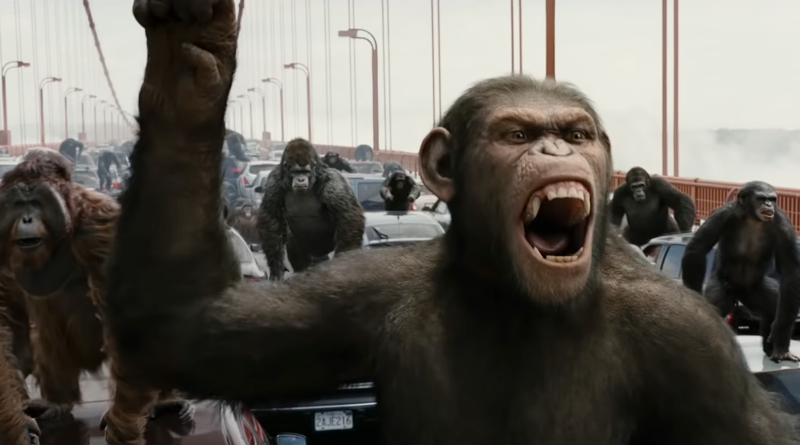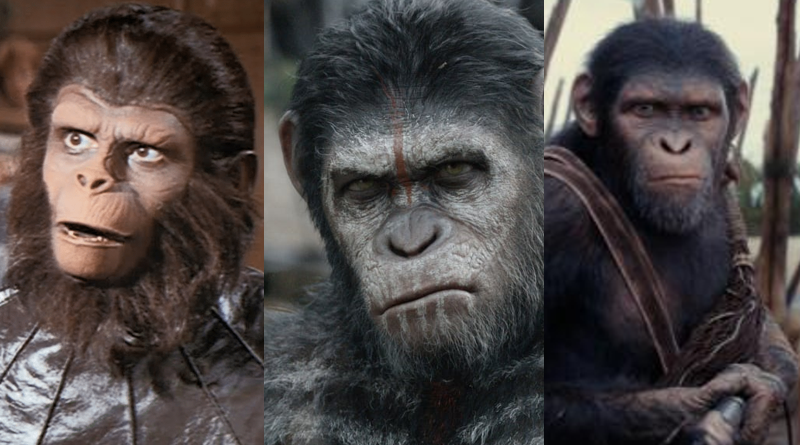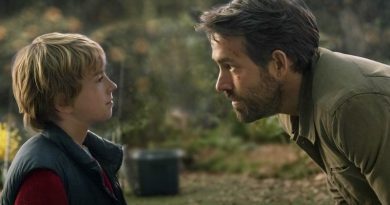All Planet of the Apes Including Kingdom of the Planet of the Apes, Ranked
The nearly 60-year-old Planet of the Apes franchise has had its fair share of ups and downs since it debuted in 1968. With Kingdom of the Planet of the Apes currently showing in cinemas worldwide to favourable reviews (you can read mine right here), it’s time to look back at the previous Planet of the Apes movies. And yes, I have also included the latest movie, all ranked from the bottom to the top.
10. Battle for the Planet of the Apes (1973)


The original Planet of the Apes franchise marks the first time we see the same director (J. Lee Thompson) returning for a follow-up. He gave us the bleakest and politically-charged Planet of the Apes movie a year prior. But Battle for the Planet of the Apes is significantly a step-down effort with a meagre US$1.7 million budget that barely justifies the title of this fifth and final instalment. It’s a war between the apes and the humans led by the vengeful Governor Kolp (Severn Darden) but the battle scene lacks the epic grandeur needed to make it work. The movie also suffers from cheap-looking ape makeup but it still has a few redeeming qualities, notably Roddy McDowall’s engaging lead performance as Caesar and Claude Akins’ solid supporting turn as the human-hating gorilla general, Aldo.
9. Planet of the Apes (2001)


The Planet of the Apes remake has everything going for it. We have Tim Burton, who is a right fit for this kind of movie; a promising cast from Tim Roth to Helena Bonham Carter, Michael Clarke Duncan and Paul Giamatti; and a huge US$100 million budget at Burton’s disposal. The latter resulted in a visually spectacular sci-fi adventure with better action set pieces while Rick Baker’s ape makeup works are top-notch. Some of the cast, particularly Tim Roth and Helena Bonham Carter deliver respectively good performances as the sinister General Thade and feisty Ari, and Paul Giamatti provides worthy comic relief as Limbo.
But the remake ultimately stumbles with a dumbed-down script, lacking the sociopolitical allegory that defines the original Planet of the Apes movies. Instead, it’s more of a typical, popcorn-friendly Hollywood blockbuster with Mark Wahlberg’s lead performance as Captain Leo Davidson, an astronaut stranded on a planet inhabited by talking apes, feels like he’s phoning in for a big paycheck. Then, there’s the twist ending which is more confusing than shocking. And finally, despite having Tim Burton on board, he seems to be more of a director-for-hire almost devoid of his distinctive filmmaking style.
And yet, Tim Burton’s expensive remake of Planet of the Apes turns out to be a huge financial hit but I’m glad there’s no sequel until Fox decided to hit another restart a decade later with Rise of the Planet of the Apes.
8. Beneath the Planet of the Apes (1970)


Beneath the Planet of the Apes is an inferior sequel, particularly when the 1968 original did so well that it earned its place as one of the greatest sci-fi movies ever made. This Ted Post-directed sequel suffers from cheap-looking special effects (blame it on the budget significantly slashed from the first movie’s US$5.8 million to $2.5 million) and Paul Dehn’s sluggish screenplay that takes time to pick up the pace.
The sequel also somewhat lost Charlton Heston, who immortalised the role of the disgruntled Taylor in the first movie, only to be reduced to a minor character. He wasn’t keen on reprising his role and it took some convincing before he finally agreed to show up in the sequel. Just not the way we wanted, which is a pity because it makes better sense to continue Taylor’s journey after the shocking discovery towards the end of the first movie.
Instead, what we have here is the introduction of Brent (James Franciscus) and yes, he plays an astronaut who crash-landed on the planet. It’s a deja vu experience from here and it doesn’t take until he and the mute Nova (Linda Harrison) lay low deep inside a cave. The cave in question turns out to be the buried ruins of what used to be New York’s Queensboro Plaza subway station.
Brent’s subsequent discovery of another population, a cult of human-like telepathic mutants gives way to the movie’s long stretch of bizarre and bonkers moments. The cult even worships an atomic bomb, leaving one to suspend their disbelief to appreciate the weirdness of this sequel. The stranger-than-fiction storytelling during the later scenes, coupled with an uncompromisingly bleak and cynical ending that I didn’t see coming made this sequel a heavily flawed but fascinating mess worth re-discovering if you haven’t done so.
7. War for the Planet of the Apes (2017)


The unexpectedly weakest entry of the Planet of the Apes reboot trilogy. After Matt Reeves surpassed the already-great Rise of the Planet of the Apes with a far superior 2014 sequel, he somehow stumbles in what could have been a consummate trilogy-ending chapter. War for the Planet of the Apes has everything going for it: an ambitious mix of The Bridge on the River Kwai, The Great Escape and Apocalypse Now. The movie also deals with vengeance revolving around Caesar’s quest to track down Apocalypse Now‘s Marlon Brando’s Colonel Kurtz-like nameless Colonel character played by Woody Harrelson.
And yet, the movie suffers from a surprisingly dour storyline that Reeves and Mark Bomback shared the screenwriting credits. The absence of Rick Jaffa and Amanda Silver, who wrote the first two movies is sorely missed. The would-be dramatic stakes, particularly during the long stretch taking place in the Colonel’s POW camp, where Caesar is held captive and forced into slavery with the rest of the apes, feel strangely hollow and even tedious. I was hoping that Woody Harrelson would give a memorable antagonist turn as the sociopathic Colonel but his performance disappoints like a bland, cut-rate version of Marlon Brando’s Colonel Kurtz.
The misleading “war” in the title turns out to be not the kind of full-scale war epic that I’m hoping for. It’s more meditative in its approach as Reeves focuses heavily on the internal conflict between the apes and Woody Harrelson’s The Colonel-led army. Even so, the movie fails to delve deeper beyond its surface-level narrative, despite all the inspiring homage of the aforementioned classic war movies.
War for the Planet of the Apes does have its moments. The first 20 minutes open promisingly with the combat scene in the jungle between the apes and the soldiers, followed by the subsequent cave ambush moment led by The Colonel in a full black camouflage face paint. Michael Seresin deserves praise for his breathtaking cinematography shot on location in the British Columbia wilderness and the same also goes for his atmospheric and gorgeous lensing on the snow-covered background.
The increasingly lifelike CGI and motion-capture technology of the ape characters is painstakingly created, notably in the close-up shots of Caesar’s facial expressions. The introduction of Bad Ape played by Steve Zahn is a worthy addition, giving the self-serious movie a much-needed shot of comic relief while Amiah Miller delivers a wonderfully sympathetic performance as the mute girl, Nova. Andy Serkis certainly gives his all as Caesar but his otherwise emotionally-penetrating journey as a battle-scarred character burdened by loss and pain is sadly undermined by Reeves and Bomback’s lacklustre storytelling.
6. Kingdom of the Planet of the Apes (2024)


With Matt Reeves who directed the last two Planet of the Apes movies out of the picture, it’s now up to Maze Runner trilogy’s Wes Ball to take charge of the franchise. I was initially worried but I’m glad Ball does a good job continuing the legacy of the post-Caesar era. The new ape characters may lack the sheer acting brilliance of Andy Serkis’s Caesar in the trilogy but they still have their moments.
Kingdom of the Planet of the Apes also benefits from Ball’s technical know-how direction with some spectacular set pieces (the opening and the scene in a field of tall grass come to mind). The special effects and the motion-capture technology are as seamless and lifelike as ever. Props also go to Josh Friedman’s screenplay, mixing adventure and mystery with a cautionary tale about trust, knowledge and technology.
5. Escape from the Planet of the Apes (1971)


Seven years before Don Taylor directed the inferior Damien – Omen II, he made one of the best Planet of the Apes sequels by gamely embracing the lighthearted tone in Escape from the Planet of the Apes. The Earth may have been blown up to smithereens — well, more of a blinding white light — the last time around but Taylor and returning screenwriter Paul Dehn manage to find ingenious ways to continue the story. And that is employing the time-travel concept as we see the remaining ape survivors Dr Cornelius (Roddy McDowall) and Dr Zira (Kim Hunter) find themselves back in time to the ’70s era.
The cultural clashes and notably how Cornelius and Zira first impressed the humans with their intelligence and articulate speeches are classic fish-out-of-the-water moments that effectively blend well with broad comedy. The latter is the last thing I expected from a Planet of the Apes movie but it works well in its favour, thanks to Dern’s witty and entertaining screenplay. It also helps with Roddy McDowall and Kim Hunter did a great job reprising their roles.
A Planet of the Apes movie wouldn’t be complete without a sense of conflict and here, this third instalment deftly goes from brightly optimistic to pessimistic, even heartbreaking moments during the climactic finale.
4. Conquest of the Planet of the Apes (1972)


After the refreshingly lightweight Escape from the Planet of the Apes, franchise newcomer J. Lee Thompson is given a scrimpy US$1.7 million budget to work with. The budget limitation rears its ugly head with fake-looking ape makeup effects and a climactic “major” set-piece takes place within the confines of Los Angeles’s Century City multi-purpose complex. The latter, which features Caesar (Roddy McDowall) leading the apes to riot against the city police led by Governor Breck (Don Murray), lacks the propulsive thrills and strong visual flair.
But Thompson, working from Paul Dehn’s better-than-expected screenplay, makes up for the shortcomings with solid, sociopolitical-heavy storytelling. Conquest of the Planet of the Apes doesn’t shy away from thought-provoking subject matters dealing with (ape) slavery and fascism, which in this case, the oppressive Governor Breck-led authority. Both Roddy McDowall and Don Murray excel in their respective roles while Ricardo Montalban shows up in a small but memorable role as circus owner Armando. McDowall stands out the most, thanks to his compelling character arc from a lost and anxious young ape dealing with uncertainty to a fearless revolutionary fighting for justice and freedom.
The ending, in particular, hits hard — the original, not the dismal theatrical cut — with a bleaker, downbeat finale revolving around the fate of Governor Breck. The original ending didn’t sit well with test audiences at the time, forcing Thompson to re-do the scene with something more optimistic. Looking at the original ending today, Caesar’s epic speech about his hatred and injustice against humankind remains as powerful as ever.
3. Rise of the Planet of the Apes (2011)


The less said about Tim Burton’s epic misfire of 2001’s Planet of the Apes reboot, the better. It wasn’t until director Rupert Wyatt and husband-and-wife screenwriting duo Rick Jaffa and Amanda Silver (1997’s The Relic) finally showed us how a good great reboot is done. Rise of the Planet of the Apes has everything a modern summer-movie blockbuster should be, blending smarts with spectacles. In this day and age, longer runtime — averaging around 2 1/2 hours or more — has become customary in today’s big-budget Hollywood blockbusters.
But this 2011 reboot proved that one can tell a solid story under the two-hour length (105 minutes, to be exact) without sacrificing or downplaying its narrative and character arc. Rupert Wyatt’s deliberate pacing helps to establish the unlikely father-son-like bonding between scientist Will Rodman (James Franco) and genetically enhanced chimp, Caesar (voiced by Andy Serkis). We see how the relationship is nurtured from the day Will adopts then-little Caesar after the unfortunate death of his mother nicknamed Bright Eyes (voiced by Terry Notary). Subsequent conflicts and circumstances give the movie the much-necessary dramatic stakes as the story evolves.
Credits also go to Conrad Buff IV and Mark Goldblatt’s brisk editing and Wyatt’s confident direction that keeps me invested in the story and characters, leading to a satisfying payoff (the climactic showdown on the Golden Gate Bridge quickly comes to mind). The CGI is top-notch, notably Weta Digital’s lifelike ape effects and the brilliant use of motion-capture technology. The special effects still hold up well today after re-watching the reboot thirteen years after its original release. Wyatt’s dynamic camerawork alongside Andrew Lesnie’s stunning cinematography, which successfully captured the fluidity of the ape’s movements and Patrick Doyle’s rousing score rounded up this first-class entertainment.
2. Dawn of the Planet of the Apes (2014)


When I first heard Rise of the Planet of the Apes director Rupert Wyatt chose to bow out of the sequel due to the rushed production schedule, I was initially worried about Fox’s hasty decision to fast-track a follow-up. Quality, after all, takes time.
But Wyatt’s replacement, Matt Reeves of TV’s Felicity and Cloverfield proved to be an ace in handling a big-budget Hollywood blockbuster. The sequel picks up a decade after the rapid spread of the Simian Flu viral outbreak during Rise of the Planet of the Apes‘ mid-credits stinger, leading to a pandemic that nearly wiped out mankind worldwide. Re-watching the sequel somehow reflects the eerie similarity of our real-world pandemic years ago, making the Simian Flu storyline all the more evocative.
Working from an engaging screenplay by Rick Jaffa and Amanda Silver with additional input from Mark Bomback (The Wolverine), Reeves successfully expands the foundation of the previous movie by focusing on the aftermath and how the adult Caesar (voiced by Andy Serkis) leads the apes and lives as a close-knit community deep in the jungle. The conflict between the apes and the humans takes centre stage again with the introduction of the survivors led by Malcolm (Jason Clarke) and Dreyfus (Gary Oldman).
A great sequel wouldn’t be complete without higher stakes as Reeves does a splendid job by adding the internal strife between the sensible Caesar and the vindictive Koba (voiced by Toby Kebbell), who plays his trusted lieutenant. Reeves also explored the gradual contradictory clashes between the apes and humans’ initial peaceful co-existence and how one’s possession over a supply of weapons triggers leverage of fear and power. The latter is particularly evident in Koba’s increasing cynicism towards human society and his disagreement over Caesar’s no-gun stance, giving the sequel a strong political edge.
Dawn of the Planet of the Apes also excels in the action sequences as Reeves embraces the sequel’s gritty side that fits the overall visual and storytelling themes. At one point, there’s a brief but memorable set-piece shot from the perspective of a tank turret as Koba navigates the armoured vehicle during the combat sequence. Toby Kebbell brings a genuine sense of menace in his voice and body language as Koba, making him the most formidable antagonist in the Planet of the Apes reboot franchise.
1. Planet of the Apes (1968)


Take your stinking paws off me, you damned dirty ape!
Charlton Heston, who plays the stranded astronaut, Taylor delivers one of the greatest lines in the history of Hollywood cinema. His character brimmed with cynicism and above all, frustration after he finds out the bitter truth about the ape-inhabited planet remains one of his most iconic roles. The truth in question, of course, refers to the movie’s most memorable moment: the still-shocking twist ending that you may or may not know by now.
Planet of the Apes also featured excellent ape makeup works with equally notable performances from Roddy McDowall and Kim Hunter as the husband-and-wife ape scientists couple, Cornelius and Zira while Maurice Evans delivers solid support as the scheming Dr Zaius. The movie, adapted from Pierre Boulle’s 1963 novel by Michael Wilson and Twilight Zone creator Rod Serling, effectively explored class divides and slavery, all wrapped up in an intriguing high-concept mix of sci-fi and fantasy.
Franklin J. Schaffner, who would direct the Oscar-winning Patton two years later, balances the 1968 original with his deliberate direction of mystery, awe and peculiarity with subtle and witty humour. Not to forget, Jerry Goldsmith’s distinctive score reflects the strangeness of the movie’s setting.




